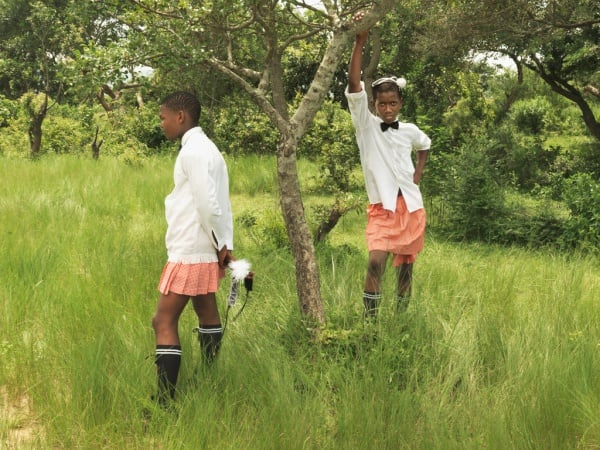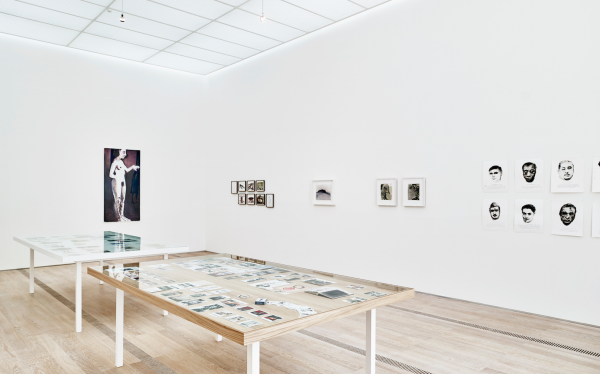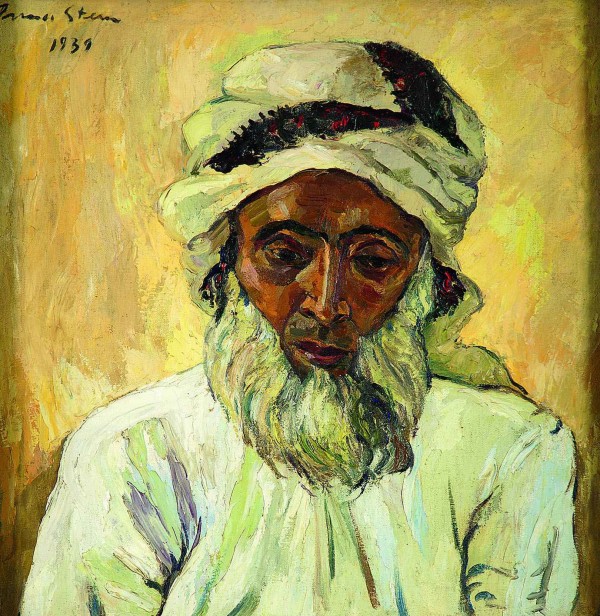Market
The Highs and Lows of Africa’s Art Market Bonanza
A report says there are 165,000 millionaires in Africa with money to spend.

Image: Courtesy of Jack Shainman
A report says there are 165,000 millionaires in Africa with money to spend.

Christian Viveros-Fauné


El Anatsui, City Plot (2010).
Image: Courtesy of Jack Shainman
Where one door closes, another one opens up. Currently this rosy cliché partly describes the fortunes of the African art market. In the wake of reports that recent auctions sputtered in New York, London and Moscow, one region seems to defy the gloomy trends. Today talk of an African art market bonanza is all the rage—as are hopeful parallels to the last serious international art boom, the Chinese art market.
The trade in modern and contemporary African art, long characterized as sluggish, has begun moving towards what optimists consider full-on bull market territory. Upbeat estimates of the health and future of the region’s arts business abound both inside and outside the continent. The latest to declare the continent to be awash in newly profitable possibilities is the Africa Art Market Report 2014, a review published in December 2015.
A study that includes regional and country-by-country highlights, the report concludes that the “Africa modern and contemporary art market is increasingly attracting the attention of buyers, both local and international” while identifying several structural and macroeconomic rationales for the continent’s newfound brio.
Jean Philippe Aka, the report’s editor, who is also a Paris-based art dealer and the editor in chief of the online publication African Art Market Today, said the study took two years to assemble and is the first such annual public accounting of the African market (a second report is due out June 2016). As such, Aka said, it considers both objective and subjective factors to represent a sector of the trade that is admittedly “at the beginning of its structural development.”
“The idea of the report,” Aka told artnet News, “is to provide the data behind the buzz, to collect information for art lovers, collectors, dealers, and academics so that they can better understand the art business and the economy of Africa.” To this end, the report relied on a combination of objective and subjective factors to arrive at a series of regional summaries and a top 100 ranking of African artists.

Zwelethu Mthethwa.
Image: Courtesy of Jack Shainman
The data used for the ranking includes the following information for selected artists: turnover at auction (25 percent), primary market prices (25 percent), number of museum exhibitions (20 percent), number of gallery exhibitions (20 percent) and, additionally, the level of recognition of these artists “among independent art critics” (10 percent). According to Aka, the rationale behind amassing hard and soft data is simple. “If one looks merely at secondary market reports,” he said, “the African art market does not exist.”
Aka’s startling conclusion is supported by auction data from artnet’s Price Database, which shows significant fluctuations of total annual sales for artists, such as El Anatsui (1), William Kentridge (3) and Sokari Douglas Camp (60). In fact, Aka’s report appears to significantly minimize the importance of auction results in gathering its Top 100 list, weighting other information instead. (Notably, artnet covers only six African auction houses holding regular sales: These are the regional houses Circle Art Agency [Kenya], Stephan Welz & Co. [South Africa], Russell Kaplan Auctioneers [South Africa], Strauss & Co. [South Africa], and CMOOA [Morocco].)
The Africa Art Market Report goes on to establish four useful artist profiles for collectors: global artists, undervalued artists, high potential artists, and artists to watch. If the first profile includes artists who have solid retail and auction markets and “are recognized internationally in both the museum and commercial worlds,” the latter three categories identify lesser-known artists as areas of potential growth. Contrast some of these figures with the prices and careers of their European, American, and Chinese counterparts and they point back to a hole in today’s global art market—artworks that represent good value.
Heading up the report’s Top 100 is the Ghanaian-born artist El Anatsui—his top lot at auction, the aluminum and copper wire Paths to the Okro Farm (2006), was sold at Sotheby’s New York in May 2014 for $1,445,000, with premium—followed by Julie Mehretu ($4,603,750), William Kentridge ($1,538,500), Irma Stern ($4,945,572), Yinka Shonibare ($194,500), and Marlene Dumas ($6,331,706). While the market outlook for these blue-chip artists is predictably, if variably, robust, examples of good value appear elsewhere. The report highlights, for instance, the works of Ghanian painter Godfried Donkor and South African photographer Zwelethu Mthethwa as typical of “undervalued contemporaries.”

Installation view of “Marlene Dumas, The Image as Burden” (2015) at the Beyeler Foundation in Basel, Switzerland
While Aka readily agrees that a “lack of professionalism” hinders the scene’s growth and that most collectors of modern and contemporary African art are presently Americans and Europeans, he points to recent advances in “infrastructure” to justify the general optimism regarding the continent’s market. Among other factors, the report considers new auction records (sales for Bonhams’ Africa Now sale in May 2014 were up 47 percent from the previous year), the number of new museums being built (among them, Cape Town’s 65,000 square foot Zeitz Museum of Contemporary Art Africa, opening 2017), the marked increase in the number of biennales (up from 7 to 15 over the last five years), the uptick in sales at art fairs devoted to African art (the 2014 FNB Joburg Art Fair recorded a 30 percent increase in sales from 2013), and—most crucial for the future of the African art market—the dramatic rise in the number of homegrown millionaires.
According to New World Wealth, a consultancy based in the UK and South Africa, there are now about 165,000 millionaires in Africa (population 1.1 billion) with a combined net wealth holdings of more than $660 billion—which comes out to roughly 28 percent of the continent’s total individual wealth. More crucially, Africa’s number of dollar millionaires rose by 145 percent compared with a global average of 45 percent between 2000 and 2014. An explosion that is three times the global average, this rise in wealth clearly benefits the expansion of a luxury goods market—of which the arts sector is often considered a subset—while also harboring profound social implications for the continent.
Reports compiled by New World Wealth put the number of dollar millionaires in Africa’s most prosperous nations at new highs. South Africa, for example, has 48,800 millionaires, followed by Egypt with 23,000, Nigeria with 15,900 and Kenya with 9,000. But, according to Africa Renewal Magazine, the boom in African millionaires has not been limited merely to the continent’s economic powerhouses. Ethiopia, long considered among the world’s poorest countries, has doubled its dollar millionaires, from 1,300 in 2007 to 2,700 in 2014. The net result of all these commas and zeroes? For the African art world, beaucoup millionaires could very well translate into a massive expansion of the continent’s art market.

Irma Stern, Arabier (1939).
Image: Wikipedia
One multimillionaire collector of longstanding is Yemisi Shyllon, a 63-year-old Yoruba prince who is the owner of a 7000-piece art collection, Nigeria’s largest. Besides acquiring thousands of artworks, Shyllon’s private foundation—the Omooba Yemisi Adedoyin Shyllon Art Foundation—regularly sponsors international fellowships, workshops and lends work to international museums. But even the Nigerian philanthropist thinks like a private wealth manager, seeing art as a potential asset class. Nigerians increasingly see art as a “status symbol and investment,” Shyllon told Bloomberg last year. “It will get much, much bigger and then it becomes dangerous for people like me to keep works of art in my house.”
Art speculation, not theft, worries Giles Peppiatt, Director of Contemporary African Art at Bonhams. Despite predicting “long-term growth,” the auctioneer also sees the danger in overhyping Africa as “the next growth market.” “The biggest threat would be if the African contemporary market became the object of speculation the way that the Chinese contemporary art market has,” said Peppiatt. “We have seen a significant fall in the values of that market as speculators have withdrawn.”
Several international dealers would also prefer to cool overheated talk of an impending African art bonanza. Tamsen Greene, director of New York’s Jack Shainman Gallery—which represents Anatsui and Mthethwa—says she’s generally distrustful of market hype because it produces inaccuracies. “It’s great that Africa is the focus of the Armory show this year,” she said about the regional emphasis of the upcoming New York art fair, “but that means that instead of lumping African artists into a single group, we should be even more sensitive to their particularities and relative levels of success.”
Liza Essers, owner and director of South Africa’s half-century old Goodman Gallery, also argues for putting the news of the African art market in its proper context. “There is no question that there is a boom in African contemporary art at the moment and that African-born collectors represent the future,” she said, “but these developments come at a time when the global economic slowdown has devalued the Rand sharply and when my country is suffering 45 percent unemployment.”
Which just goes to show, with news of this or any other bonanza, prudence should prevail over PR. “There is no art market without the history of art,” said Aka—to which he might add that there is no history of art today without a history of the art market.